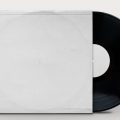In the world of music, success is often measured by the numbers. From the earliest days of the recording industry, artists and labels have sought to quantify their achievements through various metrics, from record sales to chart positions to radio airplay. But perhaps no measure of success is more iconic or enduring than the platinum album.
But what does it really take to go platinum? And what does it mean to reach even greater heights, like double or triple platinum?
Whether you’re a die-hard music fan, an aspiring artist, or just someone who loves a good success story, join us on this journey through the annals of music history. From the early days of rock and roll to the streaming era and beyond, the story of triple platinum albums is a fascinating tale of creativity, perseverance, and the enduring power of great music.

Table of Contents
- History of Music Certification
- Criteria for Triple Platinum Certification
- Famous Triple Platinum Albums
- Impact of Streaming on Certification
- The Future of Music Certification
- The Success of Triple Platinum
- FAQs
History of Music Certification
The Recording Industry Association of America (RIAA) has been the authority on music certification in the United States since the 1950s. Over the years, the criteria for achieving these prestigious awards have evolved, reflecting changes in the music industry and consumer trends.
From Gold to Platinum: The Early Days
In 1958, the RIAA introduced the Gold Record award, given to albums that sold 1 million copies. This was a significant milestone for artists, as it represented both commercial success and cultural impact. Some of the first recipients included Elvis Presley and The Beatles, who set the stage for future generations of music superstars.
As the music industry grew and sales figures soared, the RIAA recognized the need for a higher tier of certification. In 1976, they launched the Platinum Record award, honoring albums that sold 2 million copies. This new standard quickly became the benchmark for blockbuster releases, with artists like Michael Jackson and Whitney Houston setting records for multi-platinum sales.
The Rise of the Diamond Award
In 1999, the RIAA introduced the Diamond Award, recognizing albums that sold 10 million copies. This exclusive club includes some of the most iconic albums of all time, such as Thriller by Michael Jackson, The Beatles’ White Album, and Shania Twain’s Come On Over.
Interestingly, the criteria for these awards have shifted over time to account for changes in music consumption habits. In 2016, the RIAA began including streaming numbers in their certification calculations, with 1,500 streams equating to one album sale. This change has allowed more contemporary artists like Drake and Taylor Swift to reach multi-platinum status faster than ever before.
Triple Platinum: A Milestone of Musical Achievement
While not an official RIAA certification, Triple Platinum status is still a significant milestone for any artist. Representing sales of 3 million units, this achievement places an album among the most successful releases of its era.
Some notable Triple Platinum albums include Adele’s 21, Beyoncé’s I Am… Sasha Fierce, and Eminem’s The Marshall Mathers LP. These artists have not only captivated audiences with their music but have also left an indelible mark on popular culture.
Criteria for Triple Platinum Certification
Achieving Triple Platinum status is a dream for many artists, but what does it really take to reach this milestone? The Recording Industry Association of America (RIAA) has set specific guidelines for albums to be certified Triple Platinum, ensuring that only the most successful releases receive this prestigious recognition.
The Magic Number: 3 Million Units
To earn a Triple Platinum certification, an album must sell a whopping 3 million units in the United States alone. This figure includes traditional album sales, track equivalent albums (TEA), and streaming equivalent albums (SEA).
In the age of digital music, the RIAA has adapted its certification process to reflect the changing landscape of music consumption. Now, 10 tracks sold from an album equate to one TEA, while 1,500 on-demand audio and video streams count as one SEA. These updated metrics have made it easier for albums to reach Triple Platinum status in the streaming era.
The Rigorous Certification Process
Getting an album certified is no easy feat. Record labels must submit an application to the RIAA, along with sales and streaming data from recognized music retailers and platforms. This information is then carefully reviewed by the RIAA’s auditors to ensure its accuracy.
Once the album has been verified to have sold 3 million units, the RIAA will award it with a Triple Platinum plaque, a tangible symbol of the artist’s success. This recognition not only celebrates the album’s commercial achievements but also cements its place in music history.
The Elite Club of Triple Platinum Albums
While numerous albums have achieved Platinum or even Double Platinum status, the Triple Platinum club is far more exclusive. Some of the most iconic albums in recent memory have reached this milestone, including Adele’s 21, Taylor Swift’s 1989, and Drake’s Take Care.
These albums not only dominated the charts but also left a lasting impact on popular culture. They showcased the artists’ ability to create music that resonated with millions of listeners, transcending genres and generations.
The Road to Triple Platinum
Achieving Triple Platinum certification is no small feat, and it often takes months or even years for an album to reach this milestone. Consistent promotion, radio airplay, and a dedicated fan base all play crucial roles in propelling an album to the top of the charts.
In some cases, an album may experience a resurgence in popularity long after its initial release, thanks to a viral TikTok trend or a prominent sync placement in a movie or TV show. These unexpected boosts can help an album cross the Triple Platinum threshold years after its debut.
Famous Triple Platinum Albums
Throughout music history, there have been albums that have not only achieved commercial success but have also become cultural touchstones. These iconic records have sold millions of copies, earning them the coveted Triple Platinum certification. Let’s take a look at some of the most famous albums to reach this milestone.
Thriller by Michael Jackson
Released in 1982, Michael Jackson’s Thriller is often regarded as the greatest album of all time. With hits like “Billie Jean,” “Beat It,” and the title track, this album showcased Jackson’s unparalleled talent and cemented his status as the King of Pop. Thriller has sold over 33 million copies in the US alone, making it the best-selling album in American history.
21 by Adele
Adele’s sophomore album, 21, was a global phenomenon upon its release in 2011. Fueled by the heartbreak anthem “Rolling in the Deep” and the soulful ballad “Someone Like You,” this album resonated with listeners across generations. 21 spent 24 weeks at the top of the Billboard 200 chart and has since sold over 12 million copies in the US, earning it Diamond certification.
Come On Over by Shania Twain
Shania Twain’s third studio album, Come On Over, brought country music to the mainstream in a big way. Released in 1997, this album blended country, pop, and rock elements, creating a sound that appealed to a wide audience. With hits like “You’re Still the One” and “That Don’t Impress Me Much,” Come On Over has sold over 20 million copies worldwide, making it the best-selling country album of all time.
Led Zeppelin IV by Led Zeppelin
Led Zeppelin’s untitled fourth album, often referred to as Led Zeppelin IV, is a masterpiece of hard rock and heavy metal. Released in 1971, this album features some of the band’s most iconic songs, including “Stairway to Heaven,” “Black Dog,” and “Rock and Roll.” Led Zeppelin IV has sold over 23 million copies in the US, solidifying its place as one of the greatest rock albums ever made.
The Beatles (The White Album) by The Beatles
The Beatles’ self-titled album, commonly known as The White Album, is a sprawling double album that showcases the band’s incredible versatility. Released in 1968, this album features a diverse range of styles, from the stripped-down folk of “Blackbird” to the avant-garde experimentation of “Revolution 9.” The White Album has sold over 12 million copies in the US, a testament to its enduring popularity.
The Marshall Mathers LP by Eminem
Eminem’s third studio album, The Marshall Mathers LP, is a controversial and groundbreaking work of hip-hop. Released in 2000, this album features Eminem’s signature blend of dark humor, biting social commentary, and rapid-fire wordplay. With hits like “The Real Slim Shady” and “Stan,” The Marshall Mathers LP has sold over 11 million copies in the US, making it one of the best-selling rap albums of all time.
These are just a few examples of the many iconic albums that have achieved Triple Platinum status. Each of these records has left an indelible mark on music history, thanks to the artists’ creativity, innovation, and ability to connect with audiences on a deep level.
Impact of Streaming on Certification
The music industry has undergone a seismic shift in recent years, with the rise of streaming services like Spotify and Apple Music fundamentally changing the way we consume music. This digital revolution has not only altered listening habits but has also had a profound impact on album sales and the certification process.
The Decline of Physical and Digital Sales
In the pre-streaming era, album sales were the primary metric for measuring an artist’s success. Fans would flock to record stores to purchase physical copies of their favorite albums, and later, with the advent of iTunes and other digital platforms, they could buy individual tracks or entire albums online.
However, as streaming services gained popularity, the need to own music diminished. Instead of purchasing albums outright, listeners could access vast catalogs of music for a monthly subscription fee or even for free with ad-supported tiers. This shift led to a significant decline in both physical and digital sales, forcing the music industry to adapt.
The Rise of Streaming Equivalents
To account for the growing prominence of streaming, the RIAA introduced new metrics for album certification in 2016. Now, in addition to traditional sales, the RIAA counts 1,500 on-demand audio and video streams as equivalent to one album sale.
This change has had a profound impact on the way albums are certified. In the past, an album would need to sell 1 million copies to achieve Platinum status. Today, an album can reach that same milestone through a combination of sales and streams.
For example, if an album sells 500,000 copies and generates 750 million streams, it would be certified Platinum under the new rules. This has made it easier for albums to achieve higher certifications in the streaming era, as they can accumulate streams over time, long after their initial release.
The Importance of Playlist Placement
In the streaming age, playlist placement has become a crucial factor in an album’s success. Platforms like Spotify and Apple Music curate influential playlists that can expose artists to millions of potential new fans.
Landing a spot on a popular playlist can lead to a surge in streams, boosting an album’s chances of achieving certification milestones. This has led to a new form of music promotion, with labels and artists vying for coveted playlist spots and even tailoring their music to fit specific playlist aesthetics.
The Long Tail Effect
Another impact of streaming on album certification is the “long tail” effect. In the past, an album’s sales would typically peak in the weeks following its release and then taper off over time. With streaming, however, albums can continue to generate streams years after their initial release, thanks to playlist placement, algorithmic recommendations, and social media buzz.
This has allowed older albums to achieve new certification milestones long after their initial run. For example, Fleetwood Mac’s Rumours, originally released in 1977, was certified 20x Platinum in 2014, largely due to its enduring popularity on streaming services.
The Future of Album Certification
As streaming continues to dominate the music landscape, it’s clear that the certification process will need to evolve further to keep pace with changing consumption habits. The RIAA has already taken steps to modernize its approach, but more changes may be necessary as new technologies and platforms emerge.
One thing is certain: the rise of streaming has forever changed the way we think about album success. While achieving Triple Platinum status remains a remarkable feat, the path to get there looks very different than it did just a decade ago.
The Future of Music Certification
As the music industry continues to evolve at a rapid pace, it’s natural to wonder what the future holds for album certification. With streaming now firmly established as the dominant mode of music consumption, and new technologies like AI and VR poised to shake things up even further, it’s clear that the RIAA and other certification bodies will need to stay nimble to keep up with the times.
The Rise of the Platinum Single
One trend that’s already emerging is the increasing importance of singles in the streaming era. While albums remain the primary focus of certification, individual tracks are now able to achieve Platinum or even Diamond status on their own merits.
In 2013, the RIAA introduced the Diamond (10 million units) certification for singles, reflecting the massive popularity of digital downloads at the time. Since then, a handful of mega-hits like “Old Town Road” by Lil Nas X and “Shape of You” by Ed Sheeran have reached this milestone.
As streaming continues to blur the lines between albums and singles, it’s possible that we’ll see even more emphasis placed on track-level certification in the future. This could lead to new categories like “Double Diamond” or “Triple Platinum” for singles, recognizing their outsized impact on the music landscape.
The Potential for New Certification Categories
Another possibility is the emergence of entirely new certification categories that better reflect the realities of modern music consumption. For example, the RIAA could introduce a “Billion Streams” certification to honor the most popular tracks on platforms like Spotify and Apple Music.
Similarly, there could be new certifications based on social media metrics, such as “Most Shared” or “Most Liked” awards for songs that generate the most buzz online. These categories would recognize the increasingly important role that social media plays in driving music discovery and engagement.
The Impact of Emerging Technologies
Looking further ahead, it’s worth considering how emerging technologies like AI and VR could shape the future of music certification. As AI becomes more sophisticated, it’s possible that we’ll see algorithmically generated music start to compete with human-created works on the charts.
This could raise thorny questions around certification – would an AI-generated album be eligible for Platinum status? Would it need to be credited to a human artist, or could the AI itself be recognized? These are the kinds of issues that certification bodies may need to grapple with in the not-too-distant future.
Meanwhile, the rise of VR could lead to entirely new forms of music consumption and fan engagement. Imagine a virtual concert where fans can interact with their favorite artists in real-time, or a VR music video that lets viewers step inside the story. These immersive experiences could warrant their own certification categories, recognizing the unique creative and technical achievements involved.
The Need for Adaptability
Ultimately, the key to the future of music certification will be adaptability. As music industry analyst Mark Mulligan puts it, “The recorded music business is changing faster than ever before, and the pace of change is only going to accelerate. The challenge for certification bodies is to keep up with these changes while still maintaining the integrity and value of their awards.”
This means being open to new ideas and willing to experiment with different approaches, while also staying true to the core mission of recognizing and celebrating musical excellence. It’s a delicate balance, but one that the RIAA and other certification bodies will need to strike if they want to remain relevant in the decades to come.
One thing’s for sure: as long as there are artists pushing the boundaries of what’s possible in music, there will be a need for certification to honor their achievements. Whether it’s a Triple Platinum album or a Billion Streams single, these milestones will continue to inspire and delight fans around the world, no matter what the future holds.
The Success of Triple Platinum
In the end, the story of triple platinum albums is really the story of music itself. It’s a celebration of the artists who create it, the fans who love it, and the industry that supports it. It’s a reminder of the incredible impact that a single album can have, and the enduring legacy that music can leave behind.
So the next time you listen to your favorite album, whether it’s a classic from decades past or a modern masterpiece, take a moment to appreciate the incredible achievement it represents. Because behind every triple platinum certification is a story of passion, dedication, and the power of music to touch our lives in profound and lasting ways.
FAQs
What is a triple platinum album?
A triple platinum album is an album that has been certified by the Recording Industry Association of America (RIAA) as having sold or streamed the equivalent of 3 million units in the United States.
How does an album become certified triple platinum?
To become certified triple platinum, an album must sell or stream the equivalent of 3 million units in the United States. This can include traditional album sales, track equivalent albums (TEA), and streaming equivalent albums (SEA). The RIAA has specific criteria for each of these categories, which have evolved over time to reflect changes in music consumption habits.
What’s the difference between platinum and triple platinum?
A platinum album is one that has sold or streamed the equivalent of 1 million units in the United States. A triple platinum album has reached the 3 million unit mark, making it three times as successful as a platinum album.
How long does it take for an album to become triple platinum?
The length of time it takes for an album to become triple platinum can vary widely depending on the artist, the genre, and the era. Some albums, like Adele’s 21, have achieved triple platinum status within a year of release, while others, like Led Zeppelin IV, took decades to reach that milestone. In general, it’s a long and challenging process that requires sustained popularity and sales over an extended period.
Can an album become triple platinum through streaming alone?
Yes, an album can become triple platinum through streaming alone, thanks to the RIAA’s updated certification criteria. Under the current rules, 1,500 on-demand audio and video streams are equivalent to one album sale. So an album that generates 4.5 billion streams would be certified triple platinum, even if it never sold a single physical or digital copy.
Do triple platinum albums always debut at number one on the charts?
Not necessarily. While many triple platinum albums do debut at number one on the Billboard 200 or other charts, it’s not a guarantee. Some albums, like Fleetwood Mac’s Rumours, only reached the top spot months after release, while others, like The Beatles’ The White Album, never hit number one at all. Ultimately, chart performance is just one factor in an album’s long-term success and certification potential.
Can greatest hits albums or soundtracks become triple platinum?
Yes, greatest hits albums and soundtracks are eligible for triple platinum certification, just like any other album. In fact, some of the best-selling albums of all time fall into these categories, like The Eagles’ Their Greatest Hits 1971-1975 and the soundtrack to The Bodyguard.
Will streaming change the future of triple platinum certification?
It’s likely that streaming will continue to have a major impact on triple platinum certification in the years to come. As more and more listeners shift away from buying albums and toward on-demand streaming, the RIAA and other certification bodies will need to continue adapting their criteria to reflect these changes. This could lead to new categories, new milestones, and new ways of recognizing and celebrating musical achievement in the digital age.





